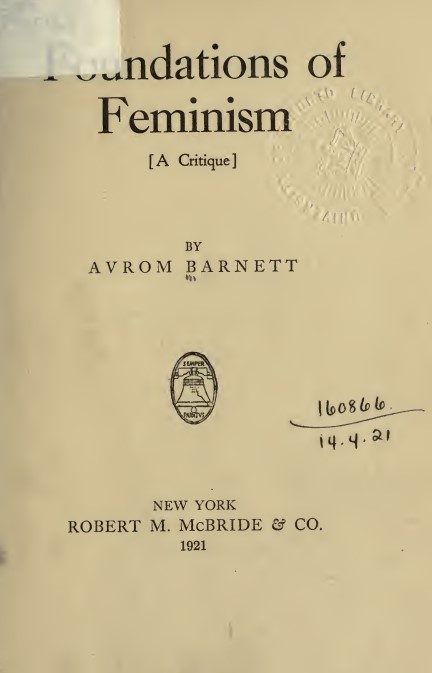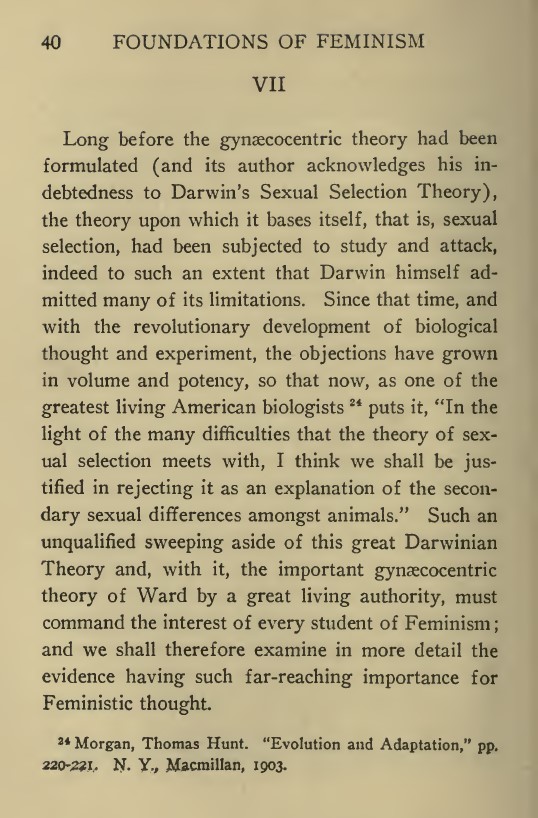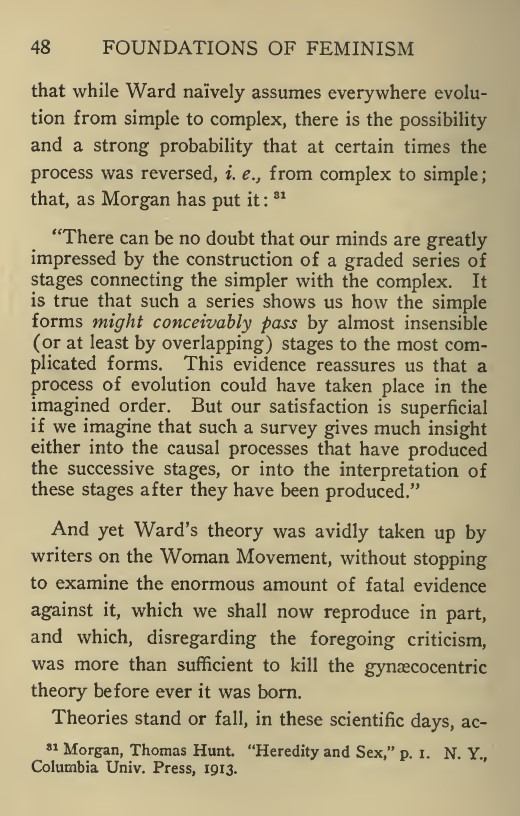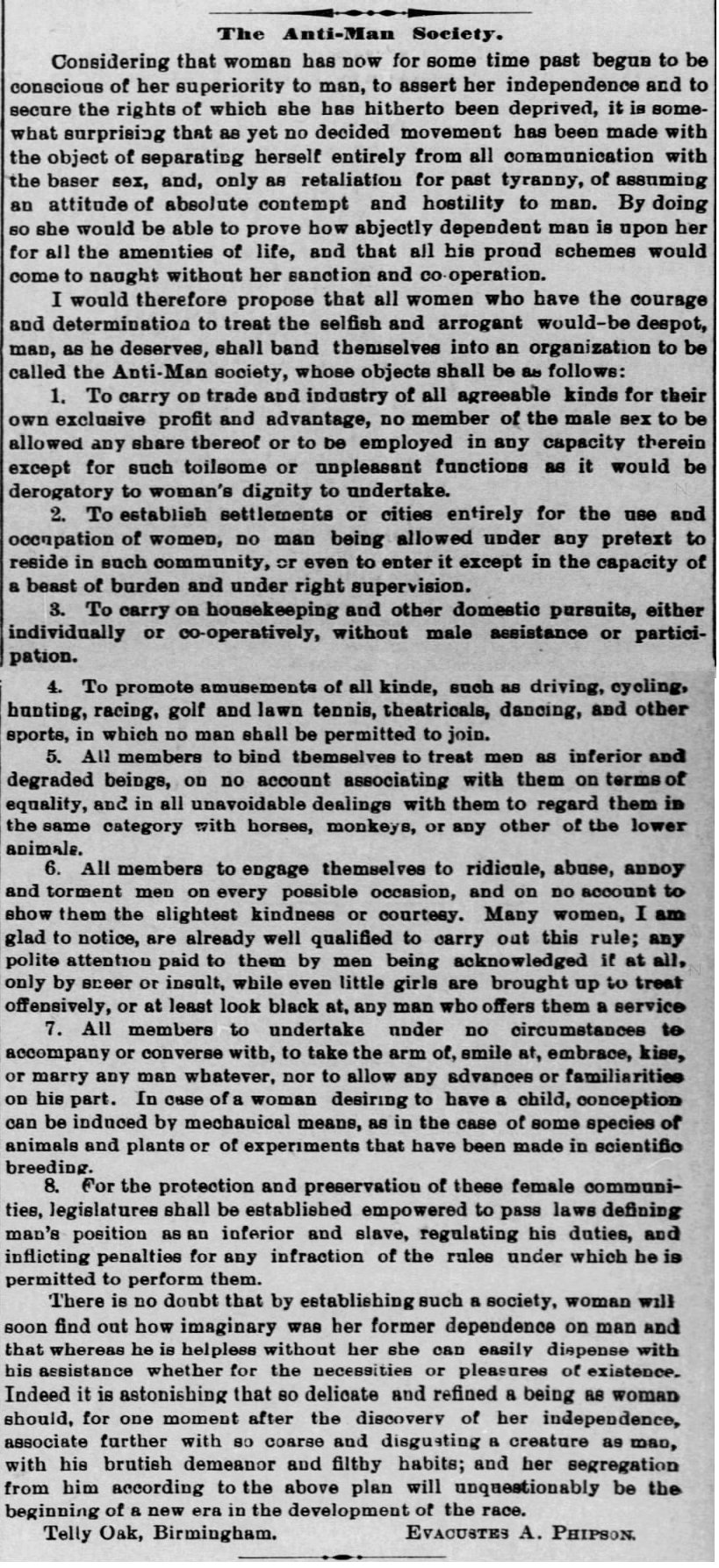Knight Of The Hangman’s Cart
On a surface level, Knight of the Cart centers around the exploits of a knight (Sir Lancelot) and his endeavors to rescue his queen (Guinevere) from kidnappers. On a deeper level, however, Knight of the Cart tells the story of a masochist, who willingly suffers at his dominatrix’s behest. With every step Lancelot takes, the line between pain and pleasure is blurred. In one particular instance, the knight braves a hazardous bridge of sharpened steel. He is wounded, but this pain soon becomes a source of gratification:
Love, which led and guided him,
Comforted and healed him at once
And made his suffering a pleasure
In this passage, pain and pleasure appear conflated. This conflation is one of the central themes of Chrétien’s narrative, and it perfectly encapsulates Lancelot’s relationship with Guinevere. She exists simultaneously as a source of pain and pleasure. In fact, she is the very impetus of their coalescence. Lancelot’s affection for Guinevere and his status as a courtly lover act as driving forces that urge him ever onward, skewing his perception of pain and bringing him into a world of masochistic pleasure. Love is his guide, and she is a cruel and sadistic mistress.
The implications of this passage do not stop here, however. The association between pain and pleasure and the dichotomy of male subordination/female domination are as relevant to Knight of the Cart as they are to courtly culture at large. In Chrétien’s writing, we see not only the passionate submission of one knight to one lady. We see one of the first, fully realized instances of sadomasochistic erotica. We see how Venus got her furs. Scholars and historians have recognized the pervading masochism of this text but have yet to attribute this masochism to a larger tradition of textual eroticism. In the following pages, we will explore the relationship between Lancelot and sadomasochistic erotica, the role of humiliation in Lancelot’s masochism, and Knight of the Cart’s connection to modern BDSM.
* * * *
Terms like sadomasochism were coined hundreds of years after the medieval period, yet they are strewn throughout these pages [Knight Of The Cart]. The plain and simple truth is that Europe was ill-equipped to address sadistic and masochistic practices as a collective during the Middle Ages. It lacked the terminology necessary to express mass, public recognition. That is not to say that sadomasochism was not deeply embedded in the public consciousness, because it was. It was so ingrained that it began seeping into the realm of popular culture and media. Elements of sadomasochistic practices are found all throughout Europe during the medieval period, most notably during the 12th century, when courtly culture was still in its naissance.
During the 1100’s, this cultural phenomena gave birth to what would come to be known as courtly romance. The courtly romance genre is perhaps the most abundant source of evidence that sadomasochism was not a foreign concept at the time. It was certainly no foreign concept to Chrétien de Troyes. As a troubadour, Chrétien committed several works to the courtly romance genre. One of his romances, Knight of the Cart, is laden with sadomasochistic subtext. But before one can explore the elements of sadomasochism that appear in this narrative, it is imperative to delve first into the preexisting scholarly responses to Chrétien’s writing.
* * * *
The Beheading
After Lancelot defeats a dishonorable knight, a maiden requests the fallen knight’s head. She essentially puts Lancelot to the task of decapitating the knight he has just defeated. He is then torn between his desire to appease the lady, and his desire to satisfy his own, personal sense of justice (Lancelot’s personal sense of justice entails having mercy for his fallen foe). Feinstein recognizes this inner turmoil when she alludes to “Lancelot’s struggle as to how to keep both his promise to give the lady the head of the defeated knight and grant the defeated knight mercy, as is his custom.” In the end, Lancelot submits to the lady’s wishes, and this submission is central to the subordination/domination that defines male/female relations in this text.
This courtly dichotomy of submissiveness and dominance is integral to Feinstein’s interpretation and overall understanding of courtly romance, and beheading is one of the linchpins holding this dichotomy together. On the surface, the act of a man beheading another man (whether at the behest of a woman or not) would seem to be an immediate expression of masculine power, but this is not how beheading functions in Chrétien’s narrative. Rather, it functions as an example of the lengths to which Lancelot will go to appease a lady.
According to Feinstein, “Chrétien’s use of beheading as closure becomes identified with issues of control or authority not as they refer to male rule, but as they relate specifically to women. . .In Chrétien’s romance, love is defined and controlled by women.” In Knight of the Cart, Lancelot is ultimately submissive to the wishes of every lady he comes across, and this is especially true of Guinevere. Their courtly love, and courtly love in general for that matter, is defined by this fundamental relationship of subordination and domination. Again, this notion of female dominion is not limited to the text. Male to female subordination saturates the courtly romance genre on both sides, appearing both on and off the page.
* * * *
In courtly culture we see men (be them courtly poets, lovers, or fictional characters) transition from the dominant role to the submissive role. We also see women transition from the submissive role to the dominant role. The understanding of courtly love as a masochistic contract is also noteworthy in this instance, as it constitutes a social space with very specific rules. These rules are very much an inversion of the norms of medieval gender relations. In short, because courtly love emulates the crucial elements of the sadomasochistic ritual, it is essential to regard courtly romance literature as part of the cultural history of sadomasochism.
So we return to the text, to that bridge of sharpened steel where pain and pleasure become one:
Love, which led and guided him,
Comforted and healed him at once
And made his suffering a pleasure
As previously stated, there is a masochistic association between love, pain, and pleasure throughout this text. Because the suffering Lancelot endures is facilitated by Guinevere, and the two are bound by the masochistic contract, she is situated as his dominatrix. According to Cohen, this is “the role of the woman of cold pleasure who enjoys the negation of her lover rather than of her self. . .the role of domna/dominatrix whose distant delectation Lancelot’s own suffering is predicated upon.” However, Lancelot’s excursion on the sword bridge is not the only instance in Knight of the Cart where suffering and satisfaction are conflated.
Another precedent of pleasurable pain is set early on in the narrative. As with Lancelot’s experience on the sword ridge, this scene also establishes a direct connection between love and wounding:
Love frequently reopened
The wound it had dealt him;
Yet he never wrapped it
To let it heal or recover,
For he had no desire or thought
To find a doctor or to bandage it,
Unless the wound grew deeper.
But willingly would he seek that certain one
This passage is especially noteworthy, as it illustrates how Guinevere (Lancelot’s “certain one”) is viewed as the disseminator of both pain and remedies. Lancelot does not want to consult a doctor: the only remedy he desires lies with his queen. Yet it is at her behest that Lancelot has received his wounds in the first place. Thus, love is responsible for injuring Lancelot while simultaneously holding the key to his recovery. This discrepancy between hurting and healing plays a big role in sadomasochism, wherein the application of aftercare is often overseen by the same dominant party that subjects the submissive party to physical pain. It is also important to note that Lancelot intentionally leaves his wounds unbandaged; he has no desire for them to heal. In other words, he is content enduring the pain of his injuries. It is as if Lancelot enjoys the pain and would only consult a medical professional if absolutely necessary.
Along with the masochistic association between love, pain, and pleasure, Lancelot’s quest is fraught with elements of sadomasochistic ritualism. According to Peter Tupper, sadomasochistic erotica often appears with an air of spiritual resonance: “Sacher-Masoch [Venus in Furs] explicitly drew connections between. . .desires, Catholicism, and paganism, which give his novel suggestion of a personal religious rite.” Chrétien’s writing establishes the same connections. For example, as Lancelot pursues the missing queen, “Mundane objects acquire great symbolic value” while he wades deeper and deeper into the sadomasochistic ritual. One example of this can be seen when Lancelot discovers a piece of Guinevere’s hair. What follows is nothing short of worship:
Never will the eye of man see
Anything so highly honored
As those strands, which he began to adore,
Touching them a hundred thousand times
To his eyes, his mouth,
His forehead, and his cheeks.
He showed his joy in every way
And felt himself most happy and rewarded.
He placed them on his breast near his heart,
Between his chemise and his skin.
He would not trade them for a cart loaded
With emeralds and carbuncles;
Nor did he fear that ulcers
Or any other disease would afflict him;
He had no use for magic potions mixed with pearls,
For drugs to combat pleurisy, for theriaca…
No use for prayers to St. Martin and St. James!
He placed so much faith in these strands of hair
That he had no need of any other aid.
Not only does this passage illustrate Lancelot’s association between mundane objects (strands of hair) and a greater allusory value, but it also elucidates Lancelot’s worship of Guinevere as a quasi-divine figure. The strands of hair are cherished as a relic that eclipses all other remedies (both spiritual and secular). In tandem with this worship, Lancelot seems to take an erotic pleasure in rubbing Guinevere’s hair all over his body. This pleasure plays out in such vivid detail that it resembles a scene of sexual gratification. Guinevere’s hair acts as a stand-in for the queen herself, and when Lancelot comes across these strands, he projects his sexual desires onto them. It is a scene ripe with the potential for titillation, one that foreshadows Lancelot’s subsequent sexual union with the queen.
Romantic Gyneolatry In The Bedroom
Lancelot’s worship of Guinevere is fully realized when the two consummate their physical relationship. The scene plays out as a religious rite turned sexual romp:
He came next to that [bed] of the Queen;
Lancelot bowed and worshiped before her,
For he did not have that much faith in any saint.
The Queen stretched out
Her arms toward him, embraced him,
Hugged him to her breast
And drew him into the bed beside her.
In this passage, Lancelot’s adoration of Guinevere is actualized in religious, albeit sexual, terms. He literally bows before her in worship. In this moment, Lancelot’s submission to Guinevere is at its most overt. The use of the word “worship” is especially noteworthy to this end, as it expresses in literal terms the subordination Lancelot willingly endures for his dominatrix. In this scene, Lancelot’s masochistic desires play out as a religious rite: this is supported by Cohen, who argues that “Lancelot’s reverence [of Guinevere] translates the sexual into the spiritual.” The spiritual resonance of this scene along with the titillation implicit in their sexually charged embrace help cement this work as a piece of sadomasochistic erotica.
This religious connection also thrusts Lancelot into the role of the masochistic martyr. When Lancelot makes his way to Guinevere’s chambers, he receives yet another injury:
Lancelot prepared and readied himself
To loosen the window.
He grasped the bars, strained, and pulled,
Until he bent them all
And was able to free them from their fittings.
But the iron was so sharp
That he cut the end
Of his little finger to the quick
And severed the whole
First joint of the next finger
Once again, this scene suggests a connection between pain and pleasure, as Lancelot receives these injuries as he makes his way to Guinevere’s bed: as he makes his way to sexual gratification. He must enter a world of pain to enter a world of pleasure. For Lancelot, pleasure always entails pain, and vice versa. In this particular instance, however, Lancelot becomes a martyr for love. More specifically, he “suffers and bleeds, his martyrdom for love.” This notion of martyrdom provides yet another connection between love, pain, and pleasure. It also supports the notion that Lancelot’s masochism plays out in spiritual terms.
When it comes to sadomasochistic erotica, it can be said that Chrétien’s Knight of the Cart bears striking similarities to other works in this literary tradition. In Leopold von Sacher-Masoch’s Venus in Furs, for example, the sadomasochistic ritual is “performed with contracts, disguises, whippings, masks, cuckolding, and role play.” Similarly, Lancelot is bound to Guinevere through the masochistic contract, through the rules of courtly love. Also, disguise plays a major role in Lancelot’s quest; he bares the moniker of knight of the cart for a lengthy period, his true name left unknown until Guinevere restores his identity:
she [Guinevere] rushed forward and called to him,
Shouting for all to hear
In a very loud voice: ‘Lancelot !
Turn around and behold
Who is watching you
The connections between Lancelot and the sadomasochistic ritual do not stop here, however. The imagery Chrétien employs also lends itself to the literary tradition of sadomasochistic erotica. The most iconic and enduring among these images is that of a powerful woman holding a whip. This image is not foreign to Knight of the Cart:
There came a girl riding
Across the heath
On a tawny mule,
With her mantle unpinned and hair disheveled.
She had a whip
As previously stated, whips and whippings are very crucial to sadomasochistic ritualism. They are symbolic of the dominatrix’s power over her subordinate masochist. Likewise, this whip-wielding woman demands satisfaction from Lancelot, and like a good masochist, he submits to her wishes. Specifically, she demands the head of an individual Lancelot has just defeated in combat. As Feinstein suggests, Lancelot endures a “struggle as to how to keep both his promise to give the lady the head of the defeated knight and grant the defeated knight mercy, as is his custom.”
In the end, Lancelot submits to the lady’s wishes, and this submission is central to the submission/domination that defines male/female relations in this text.
Cuckolding and role play are also central to Knight of the Cart’s status as a work of sadomasochistic erotica. In one particular instance, a lady puts Lancelot in a situation where he has the potential to be made a cuckold:
Help! Help!
Sir knight – you who are my guest —
If you do not pull this other knight from off me,
I’ll not find anyone to pull him away;
And if you do not help me at once
He will shame me before your eyes!
You are the one to share my bed,
As you have sworn to me!
Will this man forcibly have his will
With me before your eyes?
In this moment, the lady is not in any real danger. She is role playing with her personal guards to create the illusion that she is being assaulted. This illusion places Lancelot in a position where he believes he will be made a cuckold if he does not intervene. The role play and cuckolding may not disseminate from Guinevere, Lancelot’s primary dominatrix, but it is still a widely relevant narrative device that helps situate Chrétien’s writing as sadomasochistic erotica.
Another important thing to consider is the role that public humiliation plays in Lancelot’s quest. Throughout the narrative, the knight endures a thorough social stigmatization. The stigma itself stems from his status as the eponymous knight of the cart. According to Cohen, “The cart is described as a space wholly outside of chivalric identity. To enter its ignoble confines is to become a mere subject of the law rather than its agent.”68 Therefore, Lancelot’s decision to enter the cart is understood as a willing act of self-emasculation that effectively strips him of his social clout and renders him a pariah in the public eye. No longer is he regarded with renown as an executor of the King’s laws; he is regarded as a common criminal. In fact, Lancelot remains symbolically branded throughout a bulk of the narrative and is subject to mass ridicule on several occasions. In one instance, a group of revelers actively avoid him:
Look at that knight, look!
It’s the one who was driven in the cart.
Let no one dare continue
His play while he is among us.
In another instance, he is directly admonished: “The one who was watching him reproached him / Bitterly for having ridden in the cart.” Both cases illustrate the ramifications of Lancelot’s decision to ride in the cart. His quest to rescue Guinevere leaves him marked, and the lasting effect of this mark is ridicule in the public sphere.
Lancelot’s ridicule is essential to understanding him as a masochist. In the world of sadomasochism, the dominant party (the dominatrix, master, etc.) often takes great pleasure in leaving marks on the submissive party (the masochist, slave, etc.). These marks are widely superficial (bruises, hickeys, etc.), but they can also be of symbolic nature. In any case, they are meant to denote the dominant party’s complete and total ownership over the submissive party. Lancelot’s experience with the cart allows Guinevere to leave a lasting, albeit indirect, mark on her subordinate rescuer. To secure her favor and affection, Lancelot must receive this mark willingly and endure every modicum of humiliation that comes with it.
As previously stated, along with pain, humiliation is a condition of the masochistic contract. It may be delivered, overseen, or set in motion by the dominatrix, but it must always entail some degree of shame or emasculation. Similarly, Guinevere subjects Lancelot to public humiliation on several occasions. In one particular instance, she chides him during his engagement with Maleagant: “Ah, Lancelot! What could it be / That makes you act so foolishly?” This question has a profound effect on Lancelot. It leaves him retreating inward, into the realm of introspection. Lancelot’s self-reflection is made evident in the following passage: “Lancelot was most ashamed / And vexed and hated himself.” Even after he endures the pain and humiliation of his quest, successfully rescuing Guinevere from her imprisonment, she chastises him.
When Lancelot is victorious in his battle against Maleagant, Guinevere denies any and all gratitude towards him. She publicly and intentionally embarrasses him at the very moment when he believes his suffering is at an end: “to pain and embarrass him further / She refused to answer him a single word / And passed into another room instead.” This process of denying satisfaction is another crucial element of sadomasochism. It involves the dominatrix withholding pleasure from her submissive partner until she believes they have suffered to an appropriate degree or for an appropriate amount of time. This brings us to the subject of titillation.
To assess how titillation functions within Chrétien’s larger poetic design, one must take a closer look at the imagery of Knight of the Cart. Not only do we find images of dominatrices with whips, but we also find images of cuckoldry and sexual union. Let us return to that moment where Guinevere embraces Lancelot, and accepts him as her lover:
The Queen stretched out
Her arms toward him, embraced him,
Hugged him to her breast
And drew him into the bed beside her.
This is a viscerally sensual moment for Guinevere and Lancelot, and Chrétien spares no linguistic expense in playing up the provocative nature of his subject matter. The titillation here is multifaceted: Not only does Guinevere press her breast against Lancelot, but she is also the one to initiate the movement from one social space to another. The contextual parameters of Guinevere’s bed constitute a sexual space, and when she brings Lancelot into this space, their status as lovers is solidified. As such, the imagery of Guinevere drawing Lancelot into bed with her could be construed as sexually stimulating because of the potential sexual energy implicit in the act. It is also erotic because of the power Guinevere holds over Lancelot. She is in control, and when she pulls Lancelot into bed with her there is an anticipation that she will retain this control throughout the sexual engagement.
[ Above passages from How Venus Got Her Furs: Courtly Romance as Sadomasochistic Erotica ]
* * * *
Lancelot’s Gyneolatry
The submission which Lancelot shows in his actions is accompanied, on the subjective side, by a feeling that deliberately apes religious devotion. Although his love is by no means supersensual and is indeed carnally rewarded in this very poem, he is represented as treating Guinevere with saintly, if not divine, honours. When he comes before the bed where she lies he kneels and adores her : as Chretien explicitly tells us, there is no corseynt in whom he has greater faith. When he leaves her chamber he makes a genuflexion as if he were before a shrine.
The irreligion of the religion of love could hardly go further. Yet Chretien—whether he is completely unconscious of the paradox, or whether he wishes, clumsily enough, to make some amends for these revolting passages—represents his Lancelot as a pious man and goes out of his way to show him dismounting when he passes a church, and entering to make his prayer; by which, according to Chretien, he proves both his courtesy and wisdom.
[From C.S. Lewis – Allegory of Love: A Study in Medieval Tradition]
* * * *





